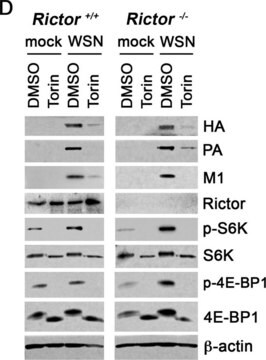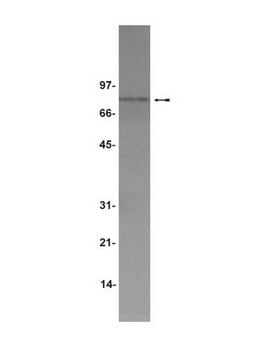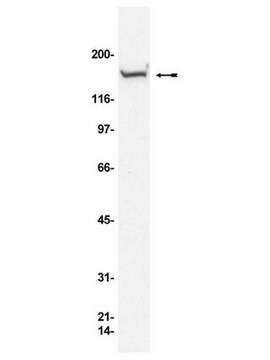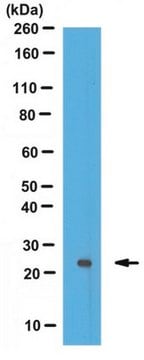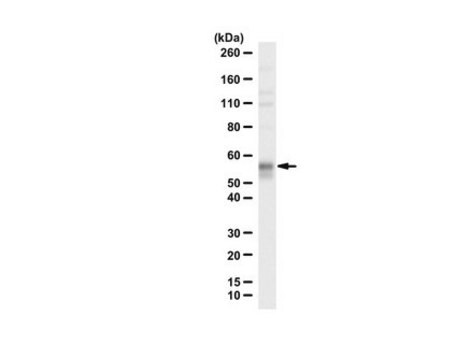SAB4200141
Anti-Rictor antibody produced in rabbit
~1-2 μg/mL, affinity isolated antibody
Sinónimos:
ANTI-Pianissimo, ANTI-Rapamycin-insensitive companion of mTOR, ANTI-TORC2-specific protein AVO3, Anti-RPTOR independent companion of MTOR, complex 2, AVO3
About This Item
Productos recomendados
origen biológico
rabbit
conjugado
unconjugated
forma del anticuerpo
affinity isolated antibody
tipo de anticuerpo
primary antibodies
clon
polyclonal
formulario
buffered aqueous solution
mol peso
~190 kDa
reactividad de especies
human, rat, mouse
envase
antibody small pack of 25 μL
concentración
~1-2 μg/mL
técnicas
immunohistochemistry: 5-10 μg/mL using a working concentration of 5-10 ug/mL is recommended using heat-retrieved formalin-fixed, paraffin-embedded rat testis sections and biotin / ExtrAvidin Peroxidase staining system.
immunoprecipitation (IP): 5-10 μg using a working amount of 5-10 μg is recommended using lysates of human HeLa cells.
western blot: 1-2 μg/mL using a working concentration of 1-2 μg/mL is recommended using whole extracts of mouse C2C12 cells.
Nº de acceso UniProt
Condiciones de envío
dry ice
temp. de almacenamiento
−20°C
modificación del objetivo postraduccional
unmodified
Información sobre el gen
human ... RICTOR(253260)
mouse ... rictor(78757)
rat ... rictor(310131)
Descripción general
Especificidad
Inmunógeno
Aplicación
Acciones bioquímicas o fisiológicas
Forma física
Cláusula de descargo de responsabilidad
Not finding the right product?
Try our Herramienta de selección de productos.
Código de clase de almacenamiento
10 - Combustible liquids
Punto de inflamabilidad (°F)
Not applicable
Punto de inflamabilidad (°C)
Not applicable
Certificados de análisis (COA)
Busque Certificados de análisis (COA) introduciendo el número de lote del producto. Los números de lote se encuentran en la etiqueta del producto después de las palabras «Lot» o «Batch»
¿Ya tiene este producto?
Encuentre la documentación para los productos que ha comprado recientemente en la Biblioteca de documentos.
Nuestro equipo de científicos tiene experiencia en todas las áreas de investigación: Ciencias de la vida, Ciencia de los materiales, Síntesis química, Cromatografía, Analítica y muchas otras.
Póngase en contacto con el Servicio técnico